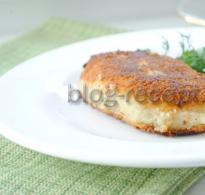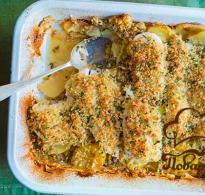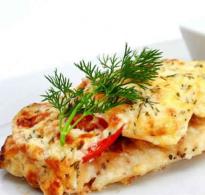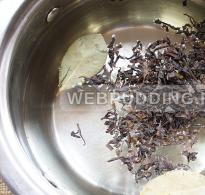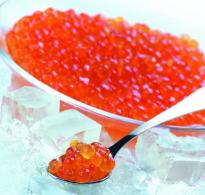What is a fork used for? Studying cutlery: what to eat with what
We will talk about the types of cutlery, their use, and purpose. Of course, most of them are used mainly at grand celebrations, restaurants and banquets. In everyday life, we use basic appliances that allow us to comfortably consume food. But I think it is useful and even necessary to know about their full set, because our life is not predictable and who knows where it will take us, but we need to be ready for anything.
Basic tableware is designed for food consumption, they in turn are divided into - refectory (dining), for snacks, fish dishes, dessert dishes and a fruit set, as well as for drinking hot drinks. It is possible that additional sets may be added to the listed sets.

Table set- intended for eating main dishes - these are the first and second hot courses. The set includes a fork, spoon, knife. The cutlery is also used for putting food into a portioned plate from a common plate.

Snack bar– its purpose is cold and hot snacks, the set includes a fork and knife.
Fish- intended for hot fish dishes - the set includes a knife, fork, the difference from a snack bar is that for fish dishes used special knife- blunt, in the form of a spatula, fork - with teeth smaller than a dining room one.

Dessert- designed for various types of desserts. The set includes a fork, knife, spoon. The fork has three prongs, the knife is pointed at the end and narrower than a snack bar, and the spoon is shorter than the knife.

A knife and fork are usually used for pies, watermelon, and cheese. Spoon - for mousses, ice cream, jelly and similar sweets.
Fruit– designed for eating fruits and fruit salads :) The set includes a fork and a knife, smaller in size than dessert ones, and have the same handle. The fork has two prongs.

For hot drinks- for tea - a teaspoon, knife, fork - for lemon and sugar - tongs. For coffee, use a spoon smaller than a teaspoon.



Experts count up to two hundred types of knives; the main table knives are presented below.

For eating oriental dishes they use sticks which are made from wood, bone, metal and, more recently, plastic. This is the main device for eating food of the inhabitants of China, Japan, Korea and Vietnam. If oriental dishes are served in European countries, the main instruments are additionally supplied to the chopsticks.
Cutlery – additional
Auxiliary cutlery are those that are used for “transporting” dishes into portioned plates, or for cutting and eating exotic dishes. We will consider them in the form of a table, for a clear example.
| A good example | Name | Application |
 |
Butter knife | Used to cut off a portioned piece of butter and place it on a pie plate. |
 |
Knife Fork | Used for cutting and laying hard cheese in portions. |
 |
Double-horn fork | For transferring herring |
 |
Sprat fork | For transferring canned fish |
 |
Device for – crustaceans | For consumption |
 |
Fork for shellfish - mussels, oysters, as well as cold, sea cocktails | For consumption and cutting. |
 |
Single tine lobster fork called needle | For consumption |
| For consumption of fish hot snacks | ||
 |
salt spoon | For consumption |
 |
Salad spoon | For shifting |
 |
A pouring spoon, popularly known as a ladle | For serving hot first courses, dairy and sweet dishes |
 |
Large pastry tongs | For "transportation" flour products confectionery |
 |
Small pastry tongs | Designed for transferring chocolate, marmalade and marshmallows, sugar and other small goodies. |
 |
Nutcrackers (pegs) | Description - obvious |
 |
Ice tongs | For shifting |
 |
Tongs for green beans(asparagus) | |
 |
Salad tongs | Designed for “transporting” salads with a lot of greens |
 |
Grape scissors | For convenient cutting of berries from a bunch |
 |
Caviar spatula | For convenient “transportation” |
 |
Rectangular blade | For “transporting” meat and vegetable dishes into a portioned plate |
 |
Curly slotted spatula | For “transporting” cold and hot fish dishes, it is especially convenient to use it for jellied fish. |
 |
Small shaped spatula | For transferring the pate |
 |
Shaped large spatula | For the confectioner |
 |
Olive fork | For convenient transferring in portions |
 |
Spaghetti fork | For convenient consumption |
 |
Spaghetti tongs | Designed for convenient “transportation” into a serving plate |
 |
Snail tongs | To hold the shell during consumption |
Here it is huge variety cutlery, which is used for consuming or transferring food. They significantly simplify the process and provide additional convenience and pleasure. That's all. I wish you well for and great events in your life.
Today it is a completely common item, without which it is impossible to imagine modern kitchen. But previously, attempts to make a fork a household item were perceived as “excessive luxury,” and the church even called it atheism and connection with the devil.
History of origin
It is known that the first mention of a fork was in the Middle East in the 9th century. Before that, people more often ate with their hands or used a spoon. And aristocrats resorted to using two knives: with one they cut up food, and with the second they helped bring food to the mouth.
There is another version of the origin of the fork. According to it, the fork appeared in 1072 in Constantinople (Byzantium). The first place where she appeared was imperial palace. And it was made of gold, the handle was made of ivory inlaid with mother-of-pearl. And they made it especially for Maria Iverskaya, the Byzantine princess, according to her own order. So she can be considered the inventor of the fork. But it was not the same at all cutlery, which is well known to us today. The fork had only two prongs and was intended primarily for skewering food.
In Italy, the fork appeared in the 17th century. It was the first country in Europe in which the aristocracy began to use a fork during meals. Later, this cutlery “reached” Northern Europe. The fork became widely used in England in the 18th century.
In 1606, thanks to Marina Mnishek, the fork appeared in Russia. Initially, this item in Russia was called “Viltsy” or “Rogatina”. Only in the 18th century the name fork was assigned to this device, and the cutlery itself began to gain popularity in use. Of course, initially the fork was available only to the rich and was served at noble dinners. It is at this time that the fork takes on the shape we know - four prongs.
Today, at modern feasts, almost a dozen different forks are used when setting the table. How to use all these devices can be read in modern specialized literature.
Types of forks
Today there are several types of forks that differ in their use. So, there are dining forks, snack forks, dessert forks and fish forks.
- Table forks largest in size. They have four teeth. As a rule, knives are placed next to them, the length of which is equal to the diameter of a medium-sized dinner plate. Accordingly, the size of the forks should be the same, or at least no more. These forks are suitable for meat (can be with a side dish), pancakes, etc.
- Snack forks slightly smaller dining rooms. They are used for hot and cold snacks.
- Dessert forks usually with two or three teeth. They are small in size and intended for cakes, pastries, pies, fruits (canned or fresh).
There is a special lemon fork, which is designed for conveniently transferring lemon slices. The fork has two sharp tines.
- Fish forks have distinctive feature– teeth of different lengths. From the name it is clear that they are intended for fish and dishes made from it. Thanks to teeth of different lengths, it is very convenient to separate fish meat from bones, as well as the pulp of oysters and mussels from shells.
In addition to forks, there are also various spatulas, needles and other utensils that make eating easier. For example, it is convenient to apply sprats with a special with a fork-spatula, which has five teeth connected by a jumper. Also, such a fork is very convenient if you need to transfer it to a plate. canned fish– she warns against deforming the fish.
Suitable for crabs, shrimps and crayfish long fork with two prongs.
To eat squid and lobster, use a special igloo, which also belongs to the category of forks.
Chill fork serves for the consumption of hot fish dishes. It has three cloves. It is very similar to dessert, only the cloves are wider and shorter.
To serve herring use two-horn fork.

dessert fork
Rules for using a fork
The table is set in such a way that all the cutlery is laid out near the plate, both on the right and on the left. Those on the right are taken with the right hand, those on the left, respectively, with the left. The device that lies farthest from the plate is taken first. So, gradually all the cutlery is used.
A fork can be held in two ways: either like a knife, with the tines down, or like a spoon, with the tines up.
The main thing is to learn how to hold a fork beautifully and correctly. It is important to remember that only three fingers work: thumb, index and middle. Moreover, the index finger should lie on top, but not on the bend, but slightly higher. And the thumb and forefinger are on the edges of the handle. The ring and little fingers are curved towards the center of the palm.
Waving a fork while eating is unethical.
When chewing food, the fork should be parallel to the plate.
Links
- Lace on a fork. Original panels, women's magazine myJane.ru
The fork became a cutlery much later than the knife and spoon - in the 9th century. But they began to actively use it only in the 17th century: it was believed that eating with hands and a spoon was much more convenient. Nowadays, the fork has become an indispensable attribute of the dining table, but understanding the variety of types of this cutlery is sometimes not so easy. Let's try to do this
- 1 of 1
On the picture:
Caring for cutlery. The forks do not require any special care. But so that they decorate longer dinner table, try not to leave food particles (even for a short time) on the forks, wash the cutlery immediately after finishing the meal, after washing, wipe them or dry them on a soft cloth, store all forks separately so that they are less in contact with each other (this will help avoid scratches) .
In the photo: Classic Art Palladio model from the Allmilmoe factory.
Basic (individual) forks
Table fork. Designed for all main hot dishes. It does not have any special features: it is most often placed on the table next to the plate. This fork has four long tines, its length is slightly less than the diameter of the dinner plate. It is placed to the left of the plate with the tines up, and if there are several forks, this one will be the one closest to the plate.
fish fork. Used for hot fish dishes. It is slightly shorter than the snack bar and has four short prongs. Depending on what kind of fish the device is intended for, a fork with rounded edges or a small special recess between the middle teeth (for separating bones) may lie on the table. This fork is placed to the left of the dining room.

- 1 of 1
On the picture:
Snack fork. Served with cold dishes, as well as cold and some hot appetizers (fried eggs, fried bacon). It is an almost exact, but smaller copy of a table fork: the length is slightly less than the diameter of a snack plate. Placed on the table to the left of the fish fork.

- 1 of 1
On the picture:
Dessert fork. Designed for dishes such as sweet pies. It is easy to distinguish from all the others by its three teeth and length corresponding to the diameter of a small dessert plate. (By the way, the decor of a dessert fork usually differs from other cutlery in being more original.) It is usually placed on the table behind the plate, with the tines facing to the right.

- 1 of 1
On the picture:
Fruit fork(salad). Served when there are apples, oranges, melons and some types of berries on the table. If served canned fruits or fruit salads, a knife and fork are not needed. And when the fruit is fresh, both devices must be served. The length of such a fork is approximately equal to the length of a fruit knife, and they necessarily have the same handles. The main difference between this fork and all others is two prongs.

- 1 of 1
On the picture:
Auxiliary (general) plugs
They lie next to the dish for which they are intended.
Lemon fork from Argenta. |
For the lemon- has two sharp teeth. An ordinary fruit fork can be used in this capacity. |
Herring fork. |
For herring- has two teeth. |
| Fork Fish serving fork from Christofle. |
For sprats- has five teeth. |
Crayfish fork by Puiforcat. |
For crayfish(crabs, shrimp) - has two teeth. Unlike many other common forks, it is quite long. |
As you can easily guess from the name, a dessert fork is designed to be used to eat desserts. This device is not necessary for daily use; at home you can completely do without it, using a spoon or even your hands. But if you are going to attend a special event where dessert will be served among other dishes, you should learn how to use this cutlery.
A dessert fork is needed in order to avoid unpleasant embarrassment with dripping fruit juice, crumbling crumbs and cream falling off the cake. as it is much more widespread, but there are a number of dishes that need to be eaten with a fork.
How to distinguish a dessert fork from others?
If you are afraid of getting confused in a restaurant, prepare for the event in advance. During long, multi-element meals, your table may end up with several forks. There are four main varieties. Don't worry, they are different, they can be easily distinguished from each other.

- The table fork has a traditional shape, small or medium deflection, large dimensions and 4 teeth. It is intended for main dishes and is used in company with a knife.
- A fish fork is smaller and narrower, with 3 or 4 prongs. This device can be paired or used together with a fish knife. It depends on the type of fish and the format of the event. Some dishes are more convenient to eat with two forks.
- The salad bowl looks like a small spoon with teeth. It has a curved shape, making it convenient to scoop up salad.
- Well, the dessert fork will be served to you when dessert appears on the table or large fruit which needs to be cut into pieces. Most of these forks have 3 prongs, but there are also products with two or four.
The dessert fork, the photo of which you see in this article, can be used for most desserts.
Buffet fork for baking
At some events that take place in a buffet format, they also serve some unusual utensils. They are a type of dessert fork, the rightmost tine of which is sharpened and elongated. This is done so that you can cut pieces of a pie or cake while holding a saucer in your hands. After all, it is impossible to use a knife in such a situation. Remember: this device can only be used when the plate is not on the table. If you can sit down and put it down, take a knife.

Fruit fork
Another common type of dessert fork is equipped with only two tines. They are quite sharp. This fork is designed for fruits and berries. They don’t eat cakes and cakes with it. If a classic dessert fork with three prongs can be served at a table where there are both fruits and pastries, then a two-pronged berry fork acts as an additional device. She does not play solo parts at feasts with many dishes.

Serving rules
This device is placed behind the plate, towards the center of the table. They put her behind her dessert spoon. The fork handle is always directed to the left. The dessert knife can be placed between the fork and the plate or on the dessert saucer, to the left of the main plate.

It is acceptable to hold a fork in your right hand, but the vast majority of dishes for which it is intended cannot be eaten carefully without a knife. Therefore, when you use both utensils, hold them the same way as cutlery: the knife in your right hand and the fork in your left. An exception may be a soufflé, a cocktail salad from small pieces fruits and cream, desserts from soft cheese in ice cream bowls. For these airy ones, delicate dishes Can be used independently as a dessert fork. You already know where this device is located and how to recognize it among other plugs. All that remains is to remember what dishes are eaten with it.
What do you eat with a dessert fork?
Sponge cakes, puff pastries, shortbreads and cakes crumble very much, so you should not bite off the delicacy. Cut off a little with a knife and eat with a fork. When serving, watermelons, pineapples and melons are cut into large pieces in portioned pieces, put one on a plate. Slices are cut from the piece, also one at a time. Remove the watermelon seeds on a plate using a fork and knife. The dessert fork should be in your left hand, don’t forget this. Do the same with grapes. The berries need to be cut in half, the seeds removed, and the halves placed on a fork. Small boneless berries are not eaten with a fork.

Informal atmosphere
It is not always necessary to observe strict ceremony. For example, if you are going on a picnic with close friends or family members and pies and watermelon will be served, dessert forks, spoons and knives may not be used. It is acceptable to eat a treat by holding it in your hand and biting it off. small pieces. In this case, you should not cut the treats too large so that they are comfortable to hold in your hand.
“But I can’t fish, I’m allergic to it.” Remember how in the film “Moscow Doesn’t Believe in Tears” the heroine was frightened by the sight of proper table setting? And it’s not surprising to get confused, especially for a person ignorant of such matters, where the abundance of cutlery really drives you into a dead end, but at least a fish fork. Who knows what it looks like, and in general which forks from the complete set are intended for seafood? This is what our article will be about today.
In general, cinema has more than once ridiculed the situation when someone does not know what to eat. We all laugh, but in our hearts we understand that it’s all about us.
It is a rare person today who will be able to accurately describe the purpose of each serving device. But this is table etiquette and you need to know it, what if tomorrow the Queen of England invites us to a Jewish fish dinner. And this will also come in handy for any mass celebrations.
Fish forks
In general, in table etiquette, the fish fork exists in several versions for certain occasions. One is intended for hot dishes - chilli, the other for canned food such as sprats or anchovies.
You should not expect that the fish fork will be signed or marked with a logo. Alas, we shouldn’t expect such a clue at the table, so we’ll learn to recognize it.
Chill forks
Chilling forks are more miniature than those we are used to eating with every day. In addition, such a device has an extended handle and only three teeth, which makes it look like Neptune’s trident.

However, modern serving standards also allow for four-pronged fish forks. But do not be afraid to confuse this cutlery with a traditional one, since its teeth are noticeably shorter, and there is a characteristic slot in the middle for easier removal of the seeds.
Usually the partner of such a fork is a special fish knife, the role of which is to hold the dish for more convenient cutting. However table etiquette also allows you to use a slice of black bread or a second fork as an assistant.

The main chilling tool is designed to separate fillets from skin and bones.
Canning fork
When starting a conversation about a fork for canned food or pickled, salted fish, it is worth saying right away that it is not the main device, but rather plays a supporting role.
They don’t even eat it, they just pass it on to her. common dish on your plate required quantity fish or pieces, if it comes to sliced fish. Even her appearance speaks about its purpose.

This is a very small fork-scapula with a wide base, topped with five teeth with a bridge. This shape makes it easy to remove and transfer the treat when oil or marinade flows through the interdental openings.
Seafood Cocktail
If you happen to be at a dinner with a predominance of seafood. Then, among the cutlery, you need to find a special trident fork, the left tine of which is longer than the other two.
Using this tool, you can easily separate mussels or oysters from the shell. But in order to open shellfish, you will need another more powerful tool - an oyster knife.
As for crabs, shrimp and crayfish, a fork is provided for them. But a special needle will help you eat lobster according to all secular rules.


With the advent table etiquette headaches have certainly increased for a good half of humanity. A lot of spoons, knives and forks can not only confuse you, but also completely kill your appetite. But now you certainly won’t refuse fish dishes, because we have already learned how to use a fish fork and how to find it.


